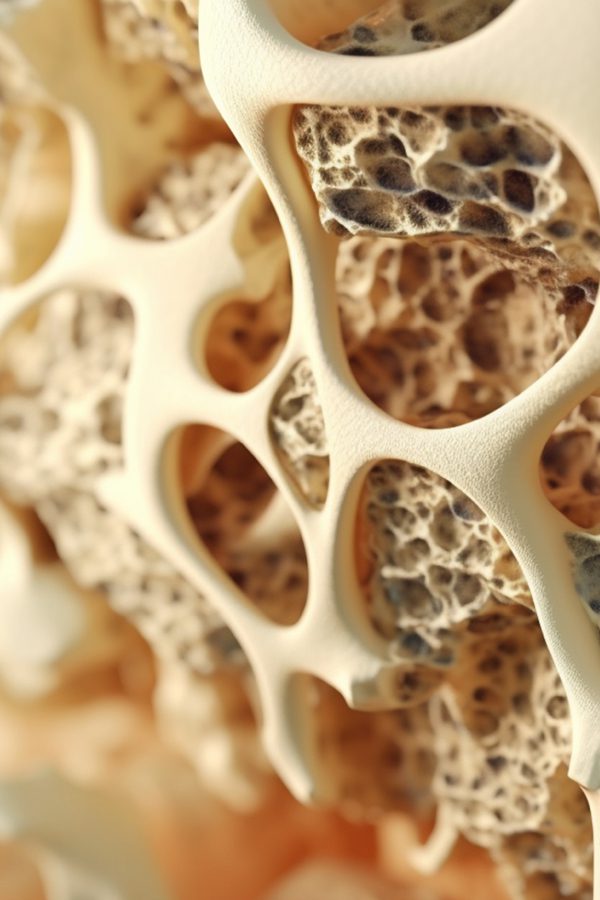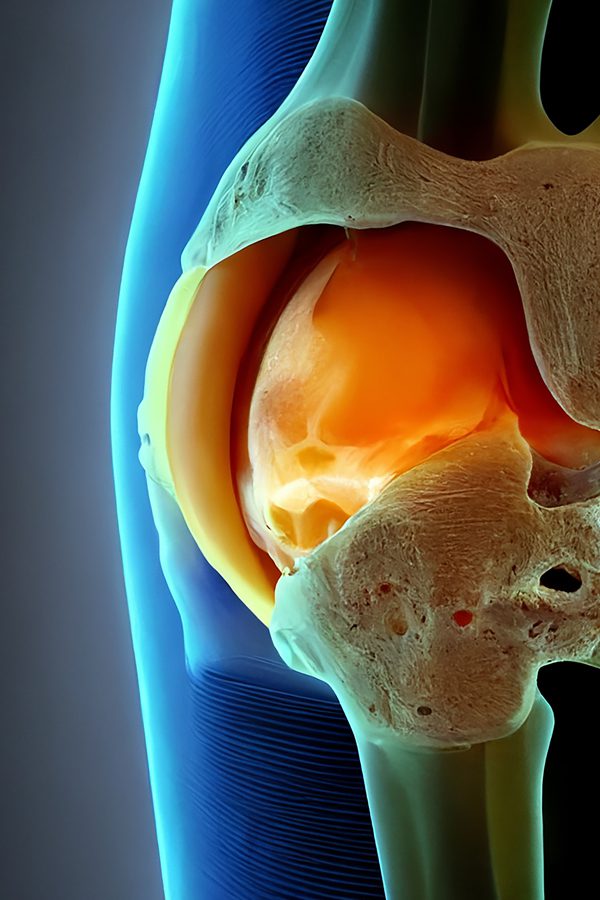Osteoporosis: Causes, symptoms and treatments
Osteoporosis is a common disease of the elderly, characterised by a decrease in bone density. This low density makes the bones more fragile and therefore more susceptible to fractures. It mainly affects women after the menopause, but can also affect men later in life.
THE CAUSES OF OSTEOPOROSIS
There are several factors that can contribute to the development of osteoporosis. One of the most important is ageing, because as we get older our bones tend to lose their density. Women are also more susceptible to the disease because of hormonal changes that occur during the menopause, including a decrease in levels of oestrogen, an hormone that is essential for maintaining bone health.
Other factors include a diet low in calcium and vitamin D, prolonged inactivity, the use of certain medications (such as corticosteroids and anticonvulsants) and genetic predisposition.
SYMPTOMS OF OSTEOPOROSIS
One of the challenges of osteoporosis is that there are often no symptoms until a fracture occurs. However, some people may experience pain in their back or sides, as well as a loss of height and a stooped posture.
It is important to note that these symptoms can also be caused by other health problems, so it is important to see a doctor for an accurate diagnosis.


TREATMENTS
Although there is no cure for osteoporosis, there are effective ways to slow or prevent its progression. These include lifestyle changes such as a balanced diet rich in calcium and vitamin D, and regular moderate exercise to strengthen bones.
In addition to these preventive measures, there are also medical treatments, such as medication to strengthen bones and prevent fractures, and hormone injections to compensate for the hormone loss associated with the menopause.
It is important to talk to your doctor about which treatment is best for you or your situation. Preventing and treating osteoporosis can not only reduce the risk of fractures, but also improve overall quality of life by maintaining strong bones and preventing complications related to the disease. In addition, it is important to monitor your bone health regularly throughout your life to identify any changes or bone loss and take action. Osteoporosis treatment is an ongoing process that requires constant attention to maintain healthy bone.
Finally, it is important to emphasise that the prevention and treatment of osteoporosis is essential for women, but also for men. Although this disease is more common in women due to the hormonal changes associated with the menopause, it can also affect men with age and other risk factors such as low testosterone or family history.
It is therefore important to raise awareness of this disease and encourage everyone, regardless of gender, to take care of their bone health now to prevent complications related to osteoporosis in the future. With a healthy diet, an active lifestyle and regular check-ups, it is possible to maintain strong and healthy bones throughout life. So don’t wait, talk to your doctor today and take the necessary steps to prevent and treat osteoporosis! Together, we can reduce the burden of this disease and improve the quality of life for everyone.
CONCLUSION
Osteoporosis is a complex disease that can have a huge impact on the quality of life of those affected.
However, by working together to raise awareness, support and advance research, we can reduce the burden of this disease and improve the health and well-being of those affected.
Let’s not forget that to prevent osteoporosis in the future, it is important to take care of your body now.
This includes a balanced diet, regular exercise and regular visits to the doctor to monitor our bone health. By taking these precautions, we can help keep our bones healthy and avoid complications related to osteoporosis.
Don’t wait – start taking care of your bones today for a healthier, stronger future. Together, we can fight osteoporosis and improve everyone’s quality of life. Also, do not hesitate to talk to your doctor if you think you have symptoms or risk factors for osteoporosis.
Your doctor will be able to advise you on what you can do to prevent or treat this disease and direct you to useful resources.
Remember that managing your bone health is an ongoing process that requires constant attention and collaboration with your healthcare professional. Together, we can effectively prevent and manage osteoporosis for a healthy and active life.
Finally, it is also important to continue to promote the development of public policies that encourage healthy lifestyles to prevent osteoporosis.


